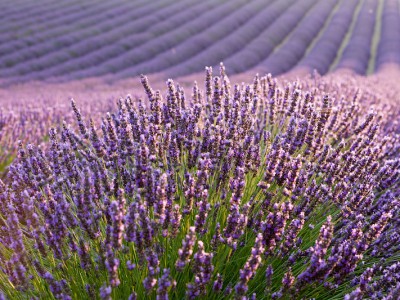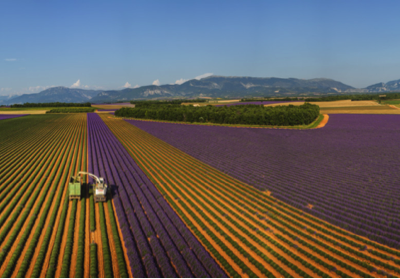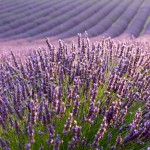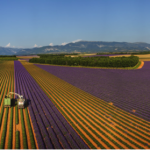Product: Lavandin Grosso
Lavandin Grosso France Lavandula hybrida var. grosso
-
Description
Lavandin itself has a history (dating back to the 1820s) of different species all with different compositions. The three most common being ‘Grosso’, ‘Abrialis’ and ‘Super’. In the past, the most common was Abrialis but this has evolved over time with ‘Grosso’ now being the dominant type with over 1,400 MT being produced in France alone each year.
Developed in the 1970's by lavender grower Pierre Grosso, the lavandin grosso plant is a more robust hybrid and grows well at lower altitudes meaning larger plantations on a more commercial scale can be managed successfully. Some of the larger plantations in France are amongst the largest commercial plantations of any essential oil in Europe. Lavandin is mechanically harvested and distilled in much larger volumes than its lavender counterpart. Taking France as an example, when we are comparing the economies of harvesting and distilling it’s the difference between 1,400 MT of lavandin versus 50 MT of lavender, almost 30 times larger! These economies bring a more cost effective product.
Lavandin is said to have a number of therapeutic benefits in particular antiseptic, anti-bacterial, anti-fungal and analgesic properties.
Read more about lavandin grosso and other lavender’s in our Elementary Essential Oils section or watch the video below to see the 2016 harvesting and distillation!
-
Product Details
- Botanical name: Lavandula hybrida var. grosso
- Origin: France
- Crop Season: July - August
- Plant/part used: Flowering tops
- Method of extraction: Steam distillation
- TSCA CAS: 8022-15-9
- EINECS: 294-470-6
- INCI Name: Lavandula hybrida grosso herb oil
- Appearance: Colorless to pale yellow
- Organoleptic Properties: Fresh and floral, camphoreous, lavender
- Density: 0.891 - 0.899
- Refractive index: 1.458 - 1.462
- Optical rotation: -7.0º to -3.0º
- Chemical constituents: Cineole 1,8 + Beta Phellandrene, Linalool, Linalyl Acetate, Camphor, Terpinenol 4
- IFRA: IFRA restricted
-
Latest Market Information October 24, 2024
France created lavandin grosso to improve the plant’s productivity and resistance. It is a hybrid of two varieties of lavender and was discovered in 1972 by lavender grower Pierre Grosso. Apart from France, it is also cultivated in New Zealand, Spain, Michigan and Las Vegas. It has a sharp, camphorous scent and blooms with large violet flowers. Lavandin Grosso requires at least 6-8 hours of sunlight to thrive.
The market situation for lavandin grosso remains tense. Producers south of France are struggling to manage costs. The price being offered in the market is not sustainable. Fair pricing is crucial for preserving regional agricultural practices and keeping the industry viable for local farmers.
Market prices : USD 20.00 /kilo -
Product Enquiry
To ask us a fair quote for this product, please fill the following form:
-
Documents & Links
 Ultra International B.V.
Ultra International B.V.



